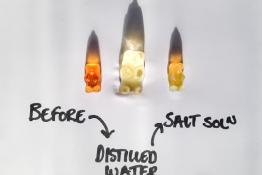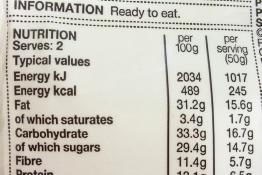When more of A doesn't result in more of B: physics experiments with a surprising outcome
Issue 363 | Page 94 | Published Dec 2016
Description
Science education research has shown that students use causal reasoning, particularly the model'agent instrument object', to explain or predict the outcome of many natural situations. Students' reasoning seems to be based on a small set of few intuitive rules. One of these rules quantitatively correlates the outcome of an experiment with the characteristics of objects involved, suggesting that an increase in one quantity should bring about an increase in a related quantity. In this article we present and discuss five simple experiments to engage students and illustrate that an increase in one property doesn't always lead to an increase in another.
More from this issue
Potatoes are often used to explain osmosis, however students forget that they contain sugars. This creates an additional learning point which may...
Despite the advanced technology and engineering that has gone onto the International Space Station and other space programmes, the measurement of...
Nutrition labelling, which helps consumers to make informed choices, can be used as both a context and a vehicle for students to consolidate and...




